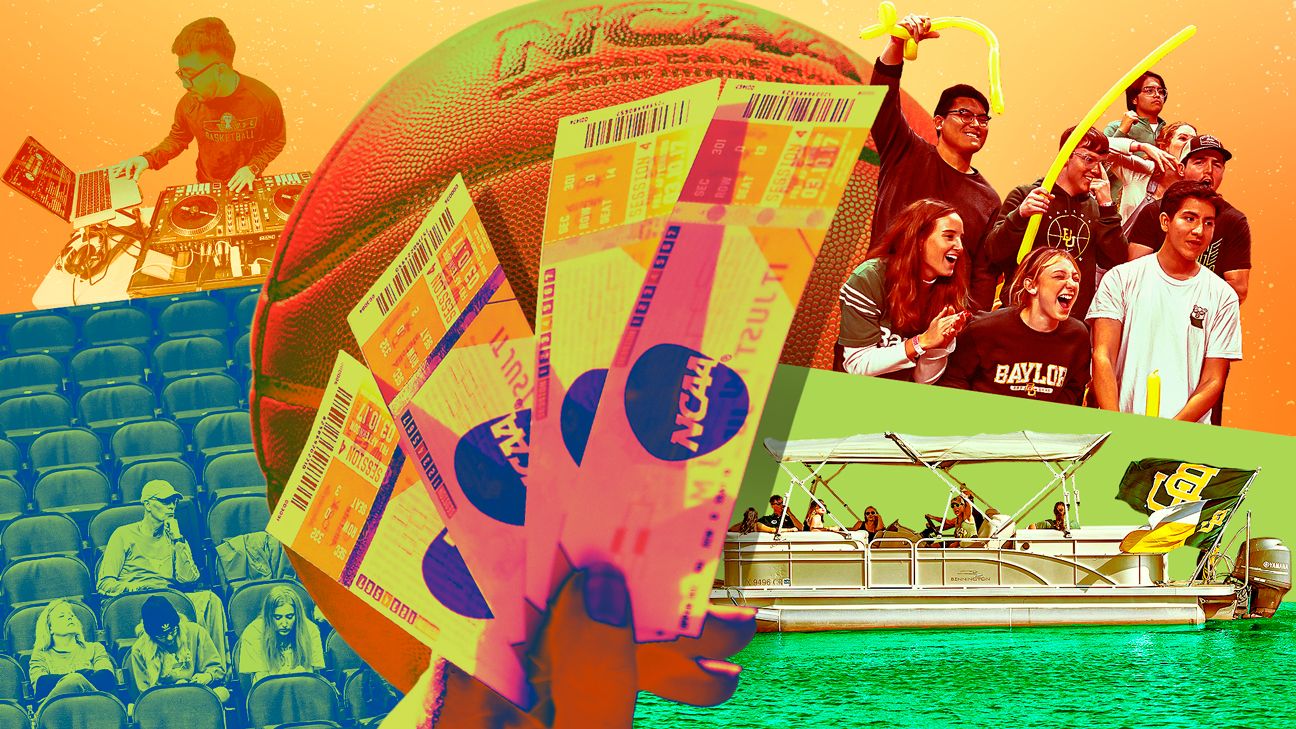BleedGopher
Well-known member
- Joined
- Nov 11, 2008
- Messages
- 63,946
- Reaction score
- 22,576
- Points
- 113
Per Myron:
Average attendance for Division I men's basketball has fallen in the past 15 years, from 5,325 in 2007-08 to 4,354 last season. Baylor's attendance grew over that stretch, but the school still followed national trends in addressing the concerns of getting fans into seats. Foster Pavilion opened in January and has 3,000 fewer seats than its former home, the Ferrell Center.
In recent months, multiple schools have visited Baylor as they make plans for their own future facilities, hoping to address what many college leaders around the country view as a serious attendance problem.
Where are the men's college basketball fans? It's difficult to say.
In a season where court storming has been a major storyline, the numbers still show that fans, broadly, aren't attending games like they used to.
In the top seven men's college basketball conferences, combined average attendance dropped from 75,818 in 2007-08 to 71,014 in 2012-13, to 66,963 last season. But that's not the full story. A recent study by Nels Popp, a University of North Carolina professor, showed that 48 schools had a 37% "no-show" rate during their nonconference games last season. Fans bought tickets but didn't come to the game. Ticket sales account for 15% of revenue in Division I athletics, per the Knight Foundation. Ticket sales also affect parking fees, concessions revenue and merchandise sales.
The attendance problem has compelled school officials to make sweeping changes to in-game experiences, including VIP packages for top spenders, more premium seating at arenas, overhauling older buildings, hiring consultants and for many, building new, smaller venues.
"I don't think anybody right now is going to build really large arenas anymore," said Gerald Harrison, athletic director at Austin Peay, which recently opened a new arena. "There are so many other things to put your money into rather than adding seats."

 www.espn.com
www.espn.com
Go Gophers!!
Average attendance for Division I men's basketball has fallen in the past 15 years, from 5,325 in 2007-08 to 4,354 last season. Baylor's attendance grew over that stretch, but the school still followed national trends in addressing the concerns of getting fans into seats. Foster Pavilion opened in January and has 3,000 fewer seats than its former home, the Ferrell Center.
In recent months, multiple schools have visited Baylor as they make plans for their own future facilities, hoping to address what many college leaders around the country view as a serious attendance problem.
Where are the men's college basketball fans? It's difficult to say.
In a season where court storming has been a major storyline, the numbers still show that fans, broadly, aren't attending games like they used to.
In the top seven men's college basketball conferences, combined average attendance dropped from 75,818 in 2007-08 to 71,014 in 2012-13, to 66,963 last season. But that's not the full story. A recent study by Nels Popp, a University of North Carolina professor, showed that 48 schools had a 37% "no-show" rate during their nonconference games last season. Fans bought tickets but didn't come to the game. Ticket sales account for 15% of revenue in Division I athletics, per the Knight Foundation. Ticket sales also affect parking fees, concessions revenue and merchandise sales.
The attendance problem has compelled school officials to make sweeping changes to in-game experiences, including VIP packages for top spenders, more premium seating at arenas, overhauling older buildings, hiring consultants and for many, building new, smaller venues.
"I don't think anybody right now is going to build really large arenas anymore," said Gerald Harrison, athletic director at Austin Peay, which recently opened a new arena. "There are so many other things to put your money into rather than adding seats."

'I want to be there': How men's college basketball is reconnecting with fans
Men's college basketball has a serious attendance problem, and athletic departments around the country are trying to solve it. Among the solutions: smaller arenas with better amenities.
Go Gophers!!
